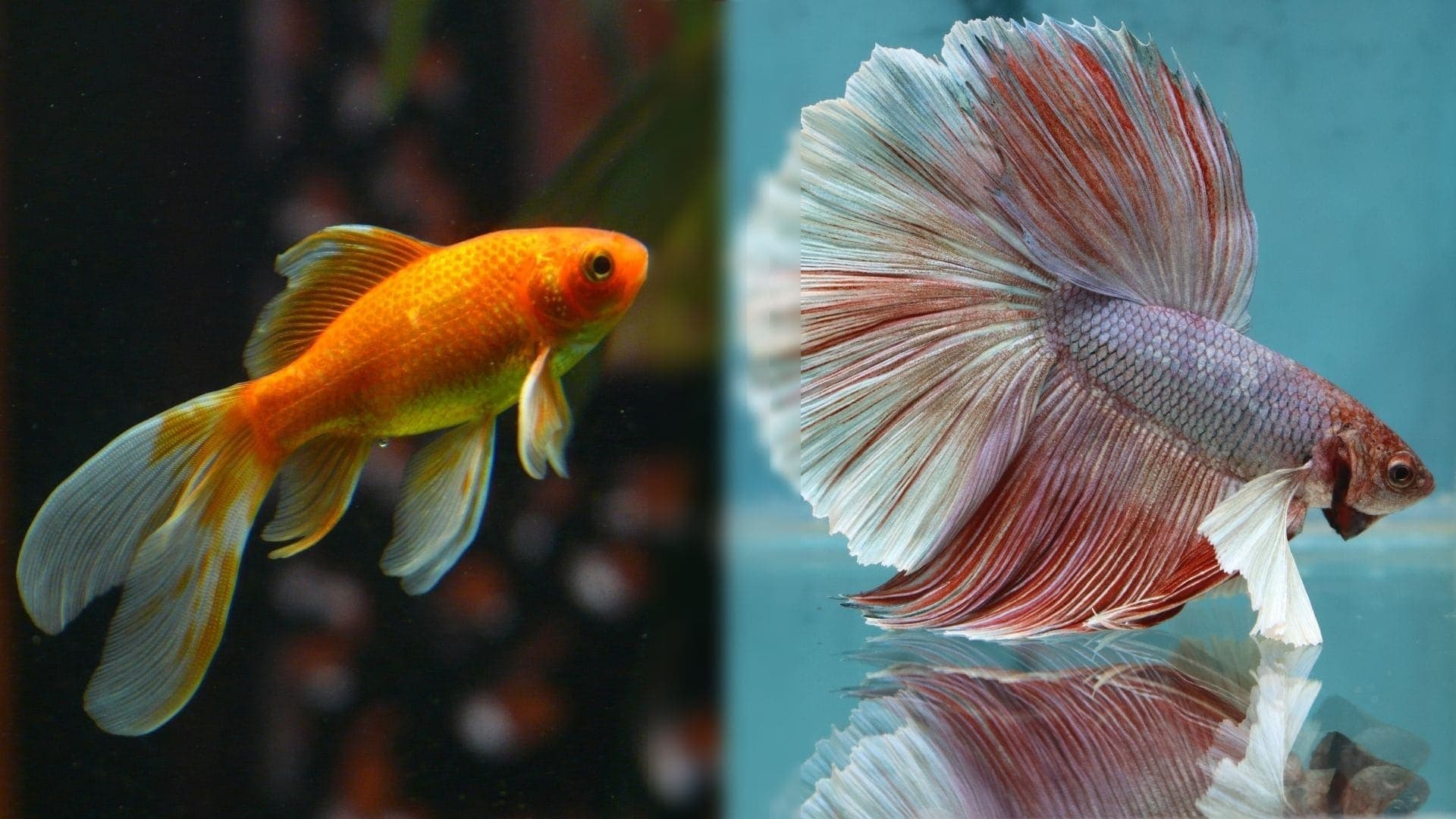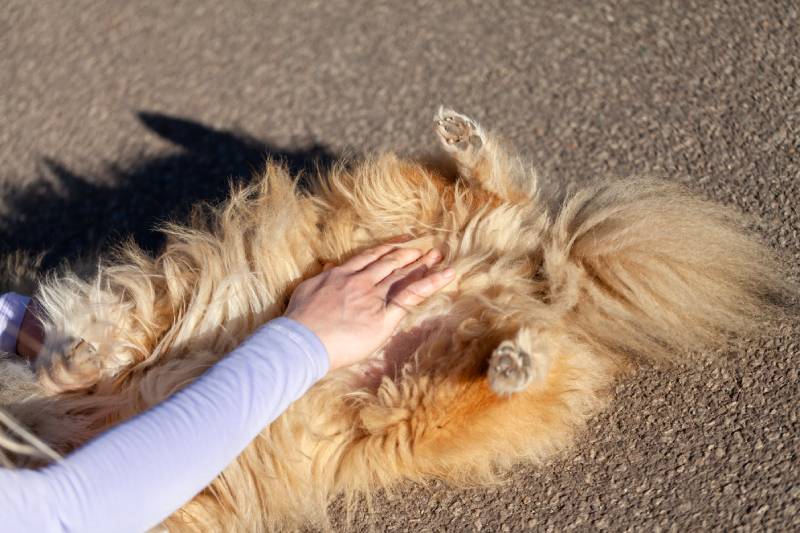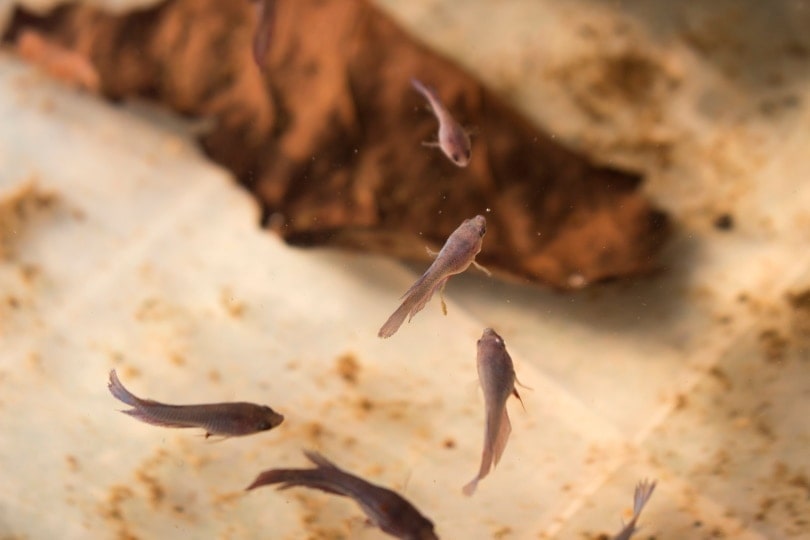Can Dogs Eat Clementines? Vet-Verified Facts & Safety Guide

Updated on

Click to Skip Ahead
They’re small and refreshing, but can your dog eat clementines? The answer is yes and no. The flesh of the clementine is safe to be eaten in moderation and as an occasional treat. However, you should never feed your dog the peel, seeds, stems, and leaves because these parts of the fruit are considered toxic for dogs.
A dog’s diet should be complete and balanced, providing all the nutrients they need to thrive. If your dog is on such a diet (which is often labeled as AAFCO or FEDIAF compliant), your dog doesn’t need any supplementation with fruit or other food items to get vitamins they may lack otherwise. However, if your pup enjoys citrus fruits, an occasional clementine nibble won’t harm them. So, let’s look at what you need to know before sharing a few clementine segments with your dog.
Important note: Before giving your dog any human food you should consult with your vet to make sure it is a safe option for your pup. Depending on their age, diet, medical history, and current health, some foods might not be suitable for your dog.
Benefits of Eating Clementines
Not all dogs will like the tart taste of clementines, and some will snatch a fallen segment and promptly spit it out in disgust. This fruit contains great amounts of vitamin C, which humans must get from their diet. However, dogs’ bodies are different, and normal, healthy dogs can make their own vitamin C, so you don’t need to worry about supplementing your dog with any citrus fruit.
However, a little extra very occasionally won’t harm them if they enjoy the taste, as they are considered safe 1. Depending on your dog’s size, we recommend giving your dog no more than one or two segments of clementines occasionally. Remember to cut them into bite-sized chunks if you have a smaller breed to prevent choking!

Risks of Eating Clementines
The flesh of any citrus fruits like clementines, tangerines, or oranges isn’t toxic to your dog, but it’s important to note that they should never be fed the peel, seeds, stems, and leaves because these are toxic. Clementines are high in sugar, so we would recommend avoiding them if your dog suffers from health problems like obesity or diabetes or if they suffer from sensitive gastrointestinal systems. If your dog is diabetic, the natural sugars in a clementine can affect blood sugar levels, and if fed in large amounts, it can also lead to excess calories being consumed.
Clementines are acidic, which can cause an upset stomach for some dogs. If this is the first time you’re giving your dog citrus, give them a small piece and keep an eye out for any signs of stomach issues, such as:
The peel and seeds should be removed; while clementines tend to be seedless, they can still contain the odd seed, so always check. Not only can the oil in the peels cause digestive upset, but the peel’s tough consistency is also difficult to digest and can lead to an intestinal obstruction.
If you notice any signs that worry you or your dog ingested something they shouldn’t, take them to the vet to get checked over.

Safe Fruits to Feed Your Dog
If your dog has a taste for fruit and you want to explore your options, there are a handful of fruits your dog can safely eat. Remember to cut them all up into bite-sized chunks and feed them in moderation! Examples of safe fruits to share are:
Please note that while many fruits do contain fiber, fiber itself is not considered a mandatory ingredient in a dog’s diet. Too much fiber may also have downsides and may impact your pet’s health negatively in some cases. When offering your pet fiber, it’s also important to consider the type of fiber, as they work differently within your dog’s body. Though fiber can definitely be beneficial when offered to your pup properly, it’s best to consult your veterinarian before incorporating it into your dog’s diet.
Image Credit: Tapati Rinchumrus, Shutterstock
Fruits That Are Unsafe for Your Dog
If you’re making a list of healthy fruit for your dog, it’s wise to recognize the fruits you should avoid. Chances are you’ve got one or more of these in your kitchen right now, so be sure to keep them out of reach of your opportunistic pup!
Be careful when offering these to your dog:
- Tomatoes: Ripe tomatoes aren’t toxic to dogs, but they should be fed in moderation. Tomato plants contain solanine and tomatine, which can cause drooling, lack of appetite, weakness, and severe digestive problems. Dogs should not be offered the stems and leaves of tomatoes (even if they are ripe tomatoes).
- Any fruit with seeds or pits: Prior to offering your dog the fruit (assuming it is safe for them), you should always remove the seeds or pits from them.
Final Thoughts
Generally speaking, clementine flesh isn’t harmful for dogs as long as you pick out the seeds, peel off the skin, offer them as a very occasional treat, and always check with your vet first. Your dog may have certain health problems or have specific dietary requirements that can make clementines a bad option for them. Remember that citrus essential oils are toxic to dogs and you should avoid its use around your pup.
If your vet has given you the green light and this is your dog’s first time eating a clementine, serve a tiny piece and watch for any signs of an upset stomach. We always recommend running any change to your dog’s diet past your vet, no matter how small the change is.
You Might Also Be Interested In
Featured Image Credit: Graphic Node, Unsplash














